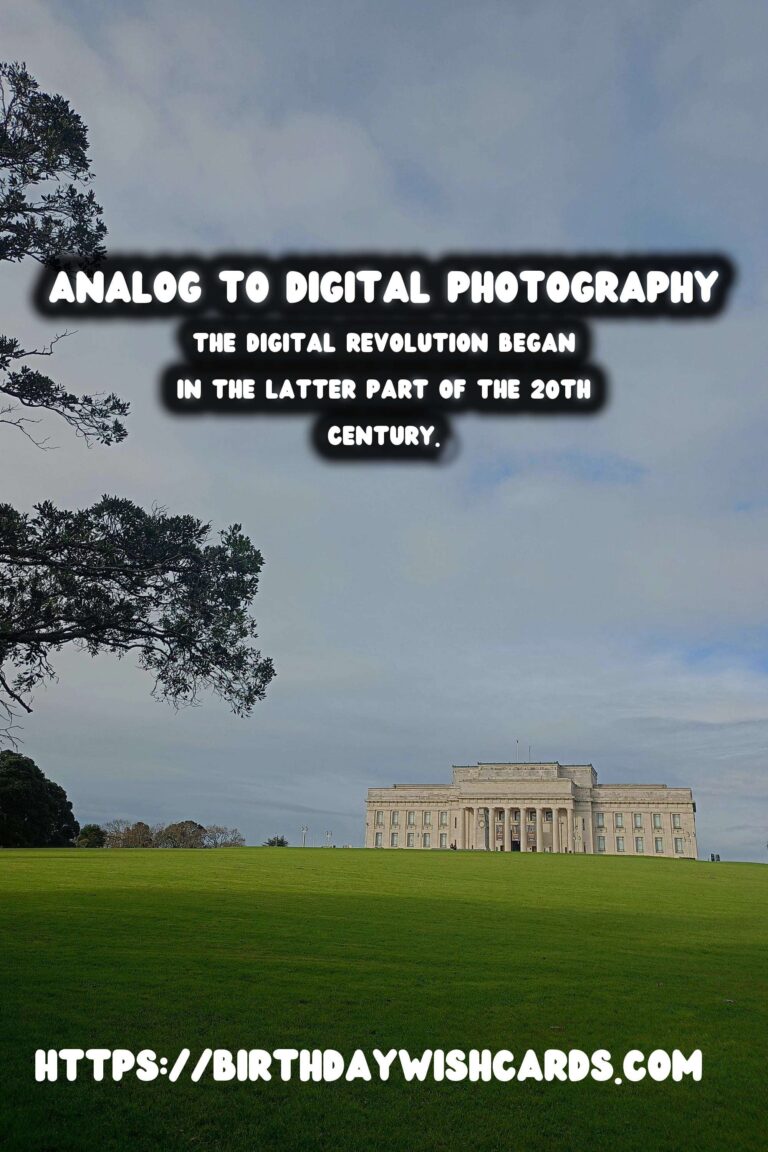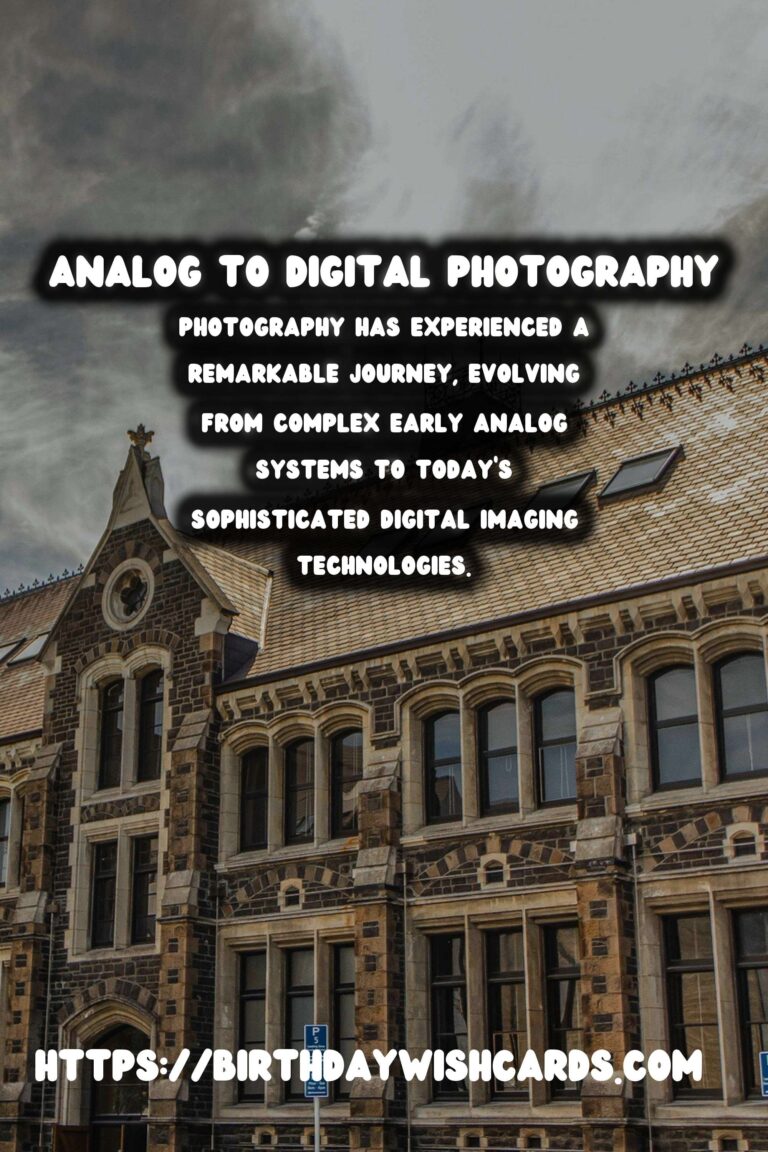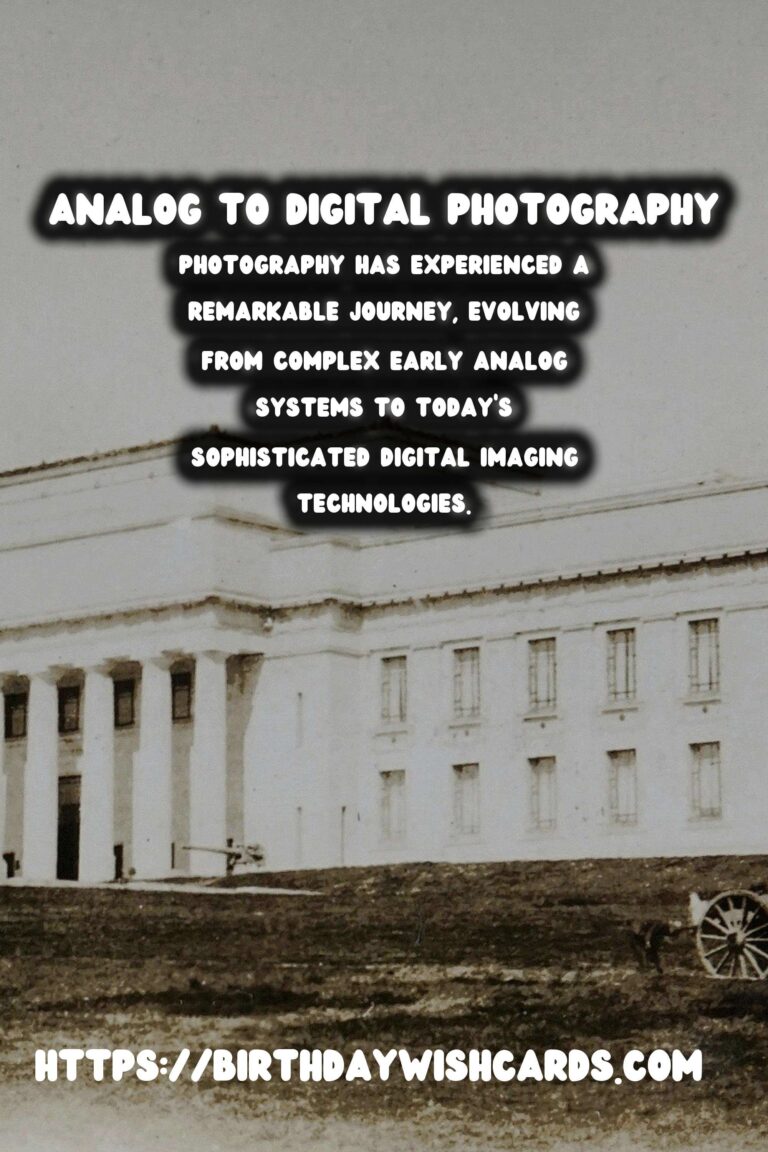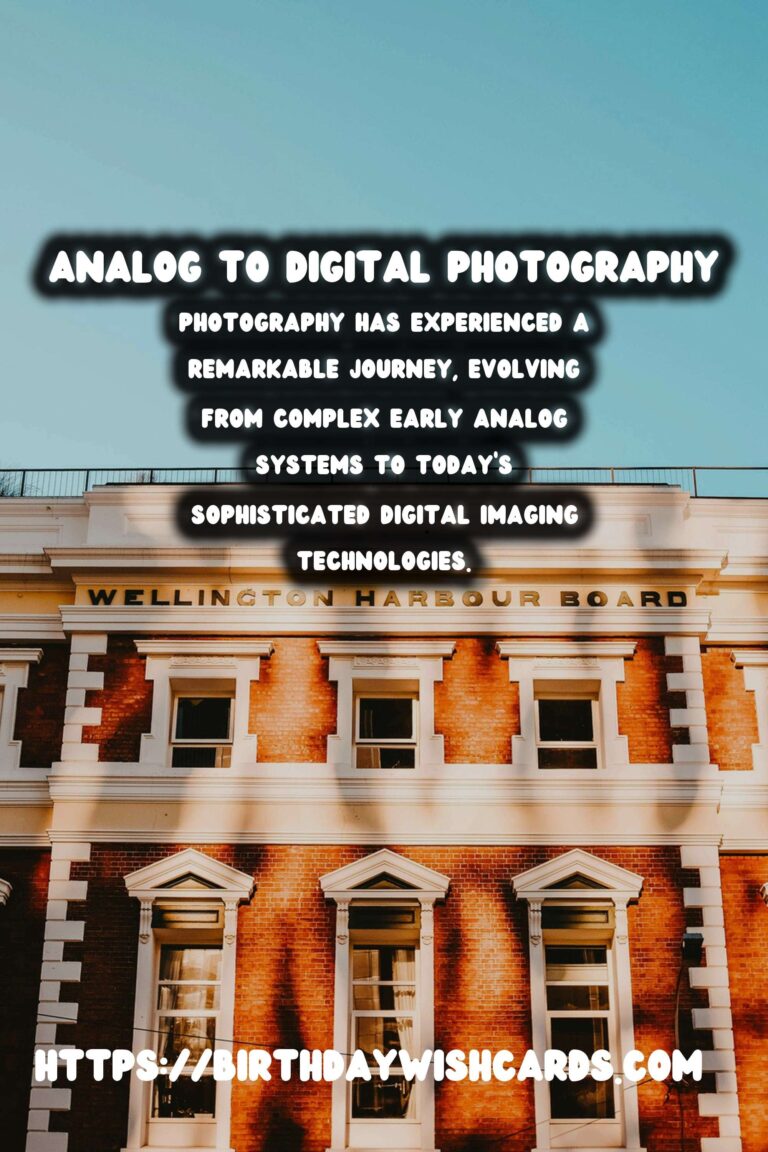
Photography has experienced a remarkable journey, evolving from complex early analog systems to today’s sophisticated digital imaging technologies. Understanding this transition offers valuable insights into how we capture, preserve, and share moments in our lives.
Beginnings of Photography: The Analog Era
The history of photography dates back to the early 19th century. The first known permanent photograph, ‘View from the Window at Le Gras’, was created by Joseph Nicéphore Niépce in 1826 using a technique known as heliography. This method required long exposure times, sometimes lasting several days, making the process cumbersome and less practical by today’s standards.
Daguerreotypes, introduced by Louis Daguerre in 1839, brought significant advancements. These images were clearer and required less exposure time than Niépce’s heliographs. Daguerreotypes became popular for portrait photography despite their delicate nature, as the images were prone to damage.
The invention of wet plate collodion photography by Frederick Scott Archer in 1851 further revolutionized the field. This process reduced exposure time significantly and allowed for multiple prints to be developed from a single negative, paving the way for broader accessibility and commercial viability.
Evolution into Film Photography
Film photography emerged as a dominant form in the early 20th century. George Eastman, founder of Kodak, introduced roll film, facilitating the mass production of cameras. With devices like the Kodak Brownie, photography became accessible to the everyday consumer. This era saw the rise of iconic photographic art and documentary photography capturing major historical events.
Through the mid-20th century, innovations in film photography continued, with the development of color film introducing a new dimension to how moments were captured and perceived. Brands like Fujifilm and Kodak competed vigorously, advancing film technology and making photography more vibrant and life-like.
The Birth of Digital Photography
The digital revolution began in the latter part of the 20th century. In 1975, Steven Sasson, an engineer at Kodak, developed the first digital camera. Although primitive by today’s standards, capturing a 0.01-megapixel image and taking 23 seconds to record one image, this innovation set the stage for digital photography’s transformative impact.
The 1990s saw digital cameras become commercially available, although initially costly and less popular due to concerns over image quality and print limitations. However, as technology improved, digital cameras offered clearer images, more storage, and instant review capabilities. These advantages gradually edged out film photography’s dominance.
The Digital Era: From Cameras to Smartphones
Digital photography’s growth has been exponential, especially with the advent of smartphones. Today, nearly everyone has access to a high-quality camera in their pocket. Smart devices integrate advanced cameras that rival traditional standalone digital cameras, making photography more seamless and integrated into daily life.
The rise of social media platforms like Instagram, alongside improved image editing software, has turned photography into a ubiquitous form of self-expression and communication. It’s not just about capturing memories—photography is now deeply embedded in how we interact with the world.
Conclusion
The journey of photography from analog to digital is a testament to human creativity and technological advancement. From chemical processes requiring hours of exposure to instant digital images, photography has vastly transformed how we see and document the world. Its accessibility and ease have made it a part of everyday life, and the innovation shows no signs of slowing down as we look towards the future where artificial intelligence and computational photography continue to break new grounds.
Photography has experienced a remarkable journey, evolving from complex early analog systems to today’s sophisticated digital imaging technologies. The digital revolution began in the latter part of the 20th century. 









#PhotographyHistory #DigitalRevolution




